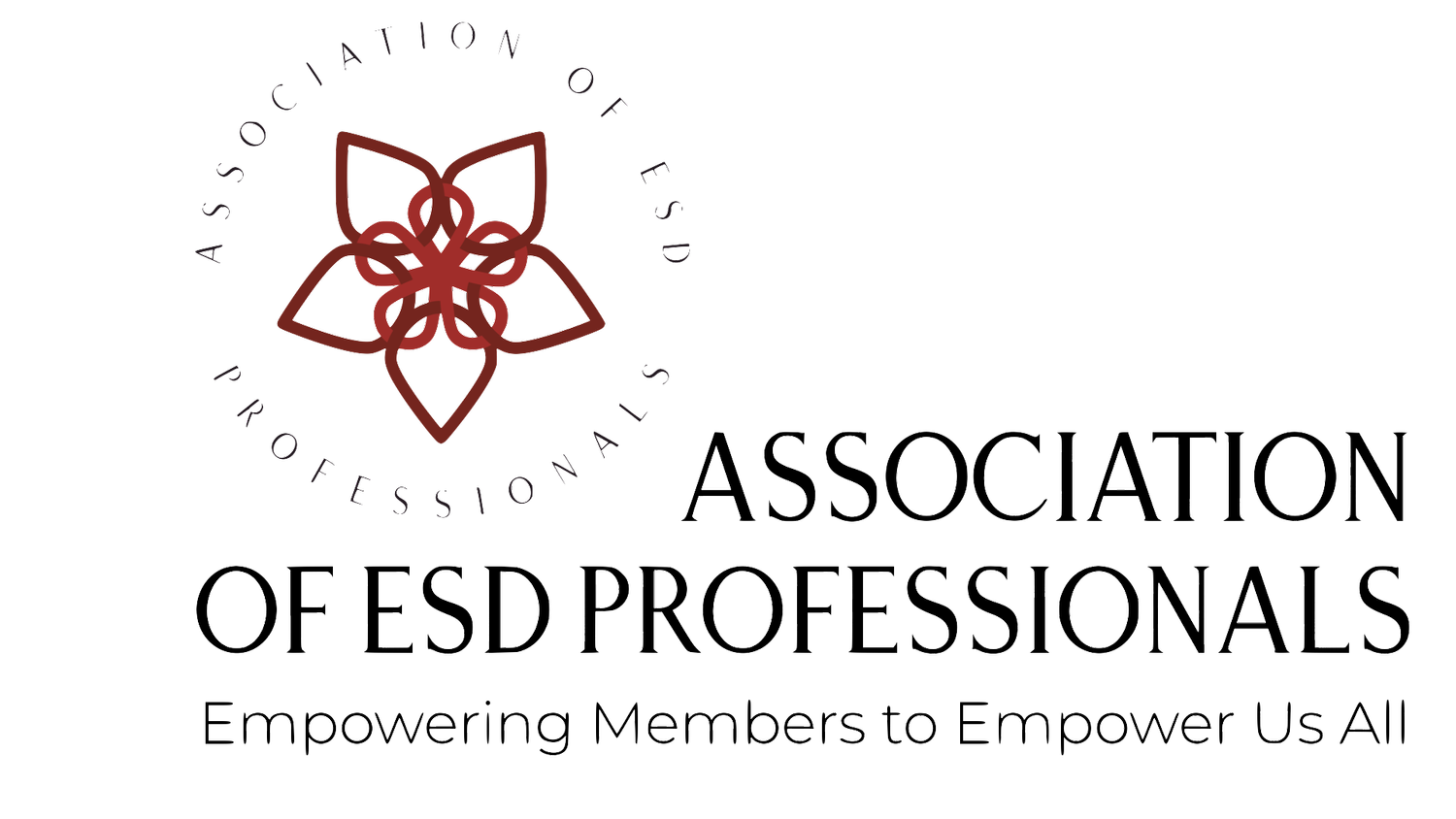7 Signs You Might Be An ESD Professional
Have you noticed that the term “empowerment” is popping up all over the Internet? Have you noticed it is often used to describe self-defense? Did you know that empowerment self-defense (ESD) is a thing and the people who teach it are ESD professionals?
You might be thinking, “Wait a second, I’m empowering! I teach self-defense! Is that me?”
While this approach to teaching self-defense has been around for a while (at least since the 1970s), it has not yet achieved widespread familiarity. At the Association of ESD professionals, we are seeking to educate the public about Empowerment Self-Defense and the ESD profession as we build relationships with self-defense instructors around the world. Some may not know—yet—that there is a whole mission-aligned community out there waiting to welcome them.
If you are teaching self-defense and working to end interpersonal violence, you might be an empowerment self-defense professional and just not know it…yet. Below are seven signs that point to you being an ESD professional.
You might be an ESD professional if …
1. You teach your students how to set boundaries.
Putting yourself first is an important part of empowerment work. For those who always want to be there for their colleagues, friends, and family, setting boundaries can be hard.
If you teach your self-defense students how to set clear boundaries with familiars and strangers alike, and if you practice what you teach, modeling this tool in your own life, you just might be an ESD Professional.
2. You use role play as a learning tool.
Giving your students the opportunity to participate in scenario-based learning helps them to answer the “What if” questions. What if someone is under the influence and is yelling and screaming? What do I do? What if my violent ex-partner comes around? What do I do if there is a home invasion? An altercation at a bar? A threat to a friend or loved one? Role play gives students the chance to practice verbal strategies for self-defense and de-escalation in situations that mirror real-life challenges and crises.
If your classes involve role-playing situations like these, you are not only using more effective teaching methods, you just might be an ESD professional.
3. You believe in the importance of trauma-informed teaching.
Trauma-informed, or trauma-sensitive, teaching means creating a learning environment that is emotionally and physically safe for participants. Trauma-informed teachers seek to be sensitive to the potential impacts of trauma on class participants, and all human beings. They approach every aspect of their class—contracts and forms, communication with students and around students, lesson plans, and group dynamics—with trust, transparency, and genuine support. They never ask, “What is wrong with you?!” and instead ask, “What happened to you that brought forth that reaction (or inaction) today?”
If you always keep in mind the safety of your students, modeling behaviors like collaboration, empowerment, and humility, you just might be an ESD professional.
4. You love to play.
Empowerment self-defense often utilizes fun and interactive activities and games to drive home key strategies or lessons. It understands the serious nature of self-defense instruction. ESD understands the serious nature of self-defense work and trains instructors to be attuned to deeply-rooted fears students may carry with them from experienced trauma, but it also teaches that injecting some fun into class can help. ESD professionals might use foam noodles, bean bags, hula hoops, music, or other playful tools to teach participants how to fight back, block strikes, or learn other strategies.
If you bring levity and laughter into the learning space to lighten the mood, help participants relax, and foster a sense of community, you just might be an ESD professional.
5. You offer choices, not imperatives.
Those who have experienced or are experiencing violence often feel like their choices are limited. When a teacher says, “You must do it this way” or, “This is what you should do,” it limits participants’ sense of agency. ESD professionals typically offer choices to their participants to encourage them to make decisions based on what they believe is right for them, providing many tools to add to their self-defense toolboxes. In an Empowerment Self-Defense class you might hear language like “These are options,” “This is what you could do,” or, “Based on your assessment of the situation, you could choose from one of these strategies.”
If you present options rather than imperatives to empower your students to trust themselves and their own intuition, you just might be an ESD professional.
6. You discuss human rights in and out of the classroom.
You don’t have to be an activist to be an empowerment self-defense professional who is frustrated with a system that serves some people but not all. As an ESD professional you likely work to combat the reality of gender-based violence through your teaching, doing your part to fight race-based, religion-based and all kinds of population-based violence by introducing conversations about these things into your classroom. It is common for an Empowerment Self-Defense class to include discussions on topics like domestic abuse, gender norms, and ubiquitous challenges with workplace and street harassment.
If you incorporate these themes in your teaching and then perhaps continue these conversations outside the classroom by writing, organizing, protesting, or just engaging those around you in ongoing dialogues, you just might be an ESD professional.
7. You see violence as existing along a spectrum.
Amidst simplified narratives of good and bad and right and wrong, you realize that the world is made up many shades of grey and that violence exists along a spectrum.
If you believe that verbal harassment, intimidation, bullying, and slander are types of violence, if you see that the harm caused with slurs of a racial, sexual, gender, or similar nature can be as damaging as physical violence, if you recognize that traumatic and violent experiences cannot be ranked because their seriousness and impact are personal to the people who have lived them and every trauma survivor’s reactions are valid, if you understand that self-defense instruction should address the full spectrum of violence and abuse, you just might be an ESD professional, and one who is broadening the definitions of violence and self-defense for your whole community.
If you think you might be an ESD Professional, we’d love to get to know each other, and sign you up for our newsletter while we're at it. Sign up here.
Want to learn more about the Association of ESD Professionals and join our growing, global community? Email us at hello@ESDProfessionals.org.


